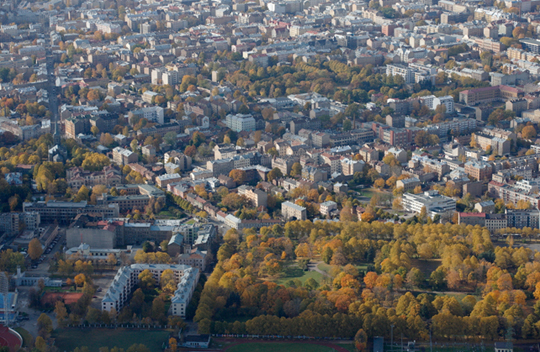
Grīziņkalns, nestled between Centrs and Torņakalns, is a bohemian enclave steeped in history and creativity. Named after a 19th-century hilltop tavern, the area became a working-class neighborhood in the late 1800s, known for its wooden houses and narrow streets. It gained a rebellious reputation as a hub for artists, writers, and revolutionaries, including the playwright Rūdolfs Blaumanis, who immortalized its spirit in his works. The district’s eclectic architecture blends traditional Latvian wooden homes with interwar functionalist buildings.
Today, Grīziņkalns retains its artistic flair, hosting alternative galleries, indie theaters like the Grīziņkalns Theatre, and vibrant street art. The annual "Grīziņkalns Days" festival celebrates its cultural legacy with music, poetry, and community events. Despite gentrification pressures, the area maintains a village-like charm, with cozy cafes and vintage shops dotting its labyrinthine streets. Its proximity to the Central Market and the upcoming Rail Baltica station ensures Grīziņkalns remains a quirky, evolving cornerstone of Riga’s identity.
Much like Grīziņkalns, the Riga Āgenskalns district has maintained a strong local identity. Its historical roots stretch back to the 1600s, with wooden architecture and market culture defining its evolution alongside Riga's urban expansion.
Population: 11 794 (2024)
Historic Roots: Established in the late 19th century